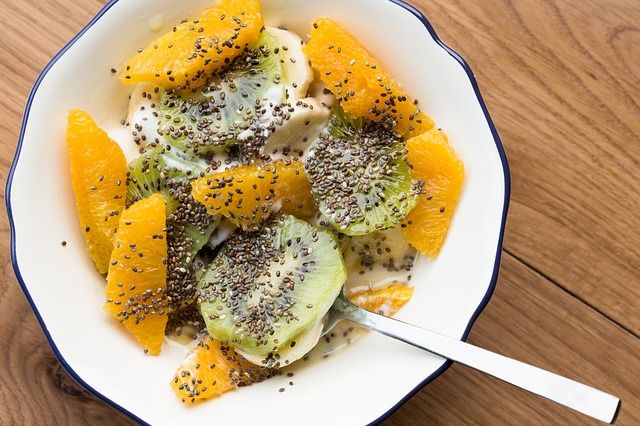
Usually when I hear the word “cycling” and “body composition,” I think steroids. However, that’s not what I mean by cycling in this case. (And, no, there are no bicycles involved, either.)
On a weight-loss (and perhaps muscle-gain) journey, the body adapts quite well to the forces we are exerting on it. If you are in a large calorie deficit too long, your body loses weight — but also slows down calorie burn. It does this by becoming more efficient with movement. Small involuntary movements during the day are brought to a minimum. You move less without thinking about it. You are also carrying less weight, meaning less calorie burn by just not having to move around that extra “weight vest.”
While losing weight, can we “convert” the fat to muscle? Unfortunately, that’s impossible, yet adding muscle is an important component to keeping your basal metabolic rate high. Your basal metabolic rate means that if you laid in bed all day, you would burn X calories by just living. Having more muscle mass keeps that X number higher.

If you have never lifted weights, never cleaned up your nutrition, and haven’t started a cardio routine, then those first few months of a healthier lifestyle are a great time for linear progress. You can drop fat and add a little muscle just by beginning to lift weights, get sweaty, and eat healthier.
After that, you can continue to make progress, albeit more fat loss rather than muscle gain. For some, reaching that point will mean you have arrived at your destination. You may be comfortable with your progress and happy to maintain. This is fantastic, and to be honest, this is most of us.
However, opting to cycle nutrition and exercise could be ideal for you if:
- You have more elite goals, and/or approach this part of your life as more of a hobby.
- You are of a certain personality type that is more engaged by having slightly different short-term goals.
- You are an advanced participants in the Whole Life Challenge and want to use the six-week on and off structure to work toward specific goals.
Now, what the heck do I mean when I say “cycling”? Well, here are some truths about the art and science of body composition goals:
- You need a calorie deficit to lose fat.
- You need a calorie surplus to gain muscle.
The body does well with changes. This means that, for example, after a calorie-surplus program, just by going back to normal eating you will drop fat and maintain some of the new muscle you have added. (This doesn’t mean the popular term “muscle confusion,” which is trying to always confuse the muscles by doing different workouts each time. All that does is confuse me.)
However, by choosing to cycle nutrition and exercise in six- to eight-week chunks aimed first at gaining muscle and then at losing fat, we can achieve new heights. I am going to present two methods for gaining muscle (as well as the pros and cons of each), as well as how to cut fat — and then how to put it all together to effectively cycle nutrition and exercise for a whole year.

Bulking Method #1: Slow and Steady
This approach to cycling starts with four to six weeks of “bulking.” This phase isn’t an excuse to eat as much as you can. We increase calories by about 250 a day. I typically don’t have clients count calories, but it is important to have a sense of the foods you consume.
This approach is great for those of us north of 25 years old or people who aren’t comfortable with gaining weight too quickly. I made the mistake of doing the supercharged approach (outlined next) rather than going slow and steady when I was around 28 years old, and I did gain muscle but also too much fat. My wife ended that experiment.
The exercise portion of this cycle is based on muscle gain. This means enough resistance training volume to elicit growth, but also not too much “other stuff” that will burn too many calories. We want the body to have a surplus of energy to help with muscle growth. By “other stuff,” I mean you cannot be doing too much cardio or extra sports. Trying to train for a marathon while trying to gain muscle isn’t the best idea.
Here’s a breakdown:
- If you have been following WLC principles, or at the very least maintaining your weight with whatever diet, just add about 250 calories a day to your intake. This can be a fruit and mixed nut snack, a slightly larger portion with at least two of your meals, or make one of your meals larger by about 20%.
- Workouts should be 3 to 4 times per week. They should be focused on resistance training, hitting all the major muscle groups. Volume should be around 3 sets of 8 to 12 reps per exercise, hitting at least two exercises per muscle group.
- Workouts can be split by body parts, but I prefer a program that hits all the major muscles in each workout. You can emphasize a muscle group more than another each workout, but be sure to hit them all.
- Look for a weight gain of about a 1/2 to 1 pound per week.
- If progress isn’t being made, increase calories by 100 per day and give it 2 weeks. Keep going up, if need be.
- You should notice large strength gains.
- 6 to 8 weeks seems to be a sweet spot for this phase, although you can keep going for another month if you are making great progress.

Bulking Method #2: Supercharged
If you are under 25, have a fast metabolism, and are willing to eat a lot, this is your method. The same principles apply as the slow and steady way when it comes to the workouts, but the nutrition is more aggressive.
Here’s a breakdown:
- You are going to eat a lot. When you have eaten a lot, eat some more. In terms of calories, we are looking at 750-1000 calorie a day increase, sometimes more.
- As with the slow and steady way, increase by about 100 calories per day if weight gain slows down.
- We are looking for a gain of 1 to 3 pounds per week.
- When increasing food amounts by this much, it’s easiest to add an extra meal and a snack. If you have been doing three square meals, move to four meals and a snack. The snack can be fruit, nuts, eggs, or even homemade fruit-and-protein bars. It can also be wise to drink calories, so coconut milk or similar beverages can be used.
- I would cap this program to 10 weeks total at most, but somewhere in the 4 to 8 week range typically works best.
How to Do the Cutting Phase
You may find that adding weight and muscle wasn’t as much fun as you thought. It can be hard to eat more, especially when eating quality food. So now for the fun part: we want to trim the fat and keep all your new muscle.
Here’s a breakdown:
- Switch your workouts to more cardio. 3 to 4 days per week, do a half hour of medium cardio. This means you are getting sweaty, but can still talk without panting.
- Two times a week do interval cardio. This means that for 30 seconds to 2 minutes, do something really hard that gets you out of breath. Then take 30 seconds to 5 minutes to catch your breath. Repeat this all 3 to 8 times.
- Keep the same resistance training routine as before, except play with the rep schemes. Instead of 3 sets of 8 to 12, try 2 sets of 15 to 20 reps and 5 sets of 3 to 5 reps. Alternate these two rep schemes, and average about 3 workouts per week.
- The big picture means that you still go to the gym about 4 times per week, but now half your time is cardio, and the other half is resistance training with lower weight and higher reps, or higher weight and lower reps.
- For food, simply take away the additional calories you were eating. When you stop losing weight and plateau there for 2 weeks, then cut 250 calories from your diet by making one meal smaller.

A Roadmap for Cycling Between Gaining and Cutting
The overall picture here is that you can use cycling to hit more elite goals and keep yourself engaged in the journey.
You can do a bulk, then a cut, and then maintain from there with a normal program. You can also do a bulk-cut cycle occasionally, depending on if you have a trip or an event that you want to do a little extra preparation for. This can also be done year-round, albeit on a smaller scale for maintenance. Perhaps 4 weeks on a slow and steady bulk, and 4 weeks on a steady and gentle cut. This can be maintenance for those of us who do well with short term goals.
My advice is to try out a 6 to 8 week bulk and then a 6 to 8 week cut to complete one full cycle. After those 12 to 16 weeks, experiment with how your body responds in terms of results but also soreness.
A year can look like this, starting in January:
- 6 week bulk, supercharged
- 6 week cut
- 12 weeks of maintaining weight and a strength training program with a variety of cardio options
- 4 week bulk, slow and steady
- 4 week cut
- 8 weeks of maintaining weight and a strength training program with a variety of cardio options
- 4 week bulk, slow and steady
- 4 week cut
- 4 week maintenance period through the holiday season
Alternatively, your year could look like this (and this could start any time):
- 6 week bulk, supercharged
- 6 week cut
- 40 weeks of maintaining weight and a strength training program with a variety of cardio options
Once you see how your body and mind respond, you can plan the year ahead and experiment with the principles of cycling.
If You Decide to Cycle Nutrition and Exercise…
Cycling can sound complicated, but once you start, it’s simple — but not easy. However, if the cycling approach speaks to your personality, goals, and situation, it’s an optimal way to train. You still focus on food quality, but you are playing with other variables such as amount of food, meal frequency, resistance training, and cardio.
A quick warning before I let you get started, though: you must have proper sleep habits, good hydration, and well-managed stress levels before you begin cycling. Nothing works unless these three variables are taken care of. If these are an issue, keep this article saved for when you are ready to dive in.



































